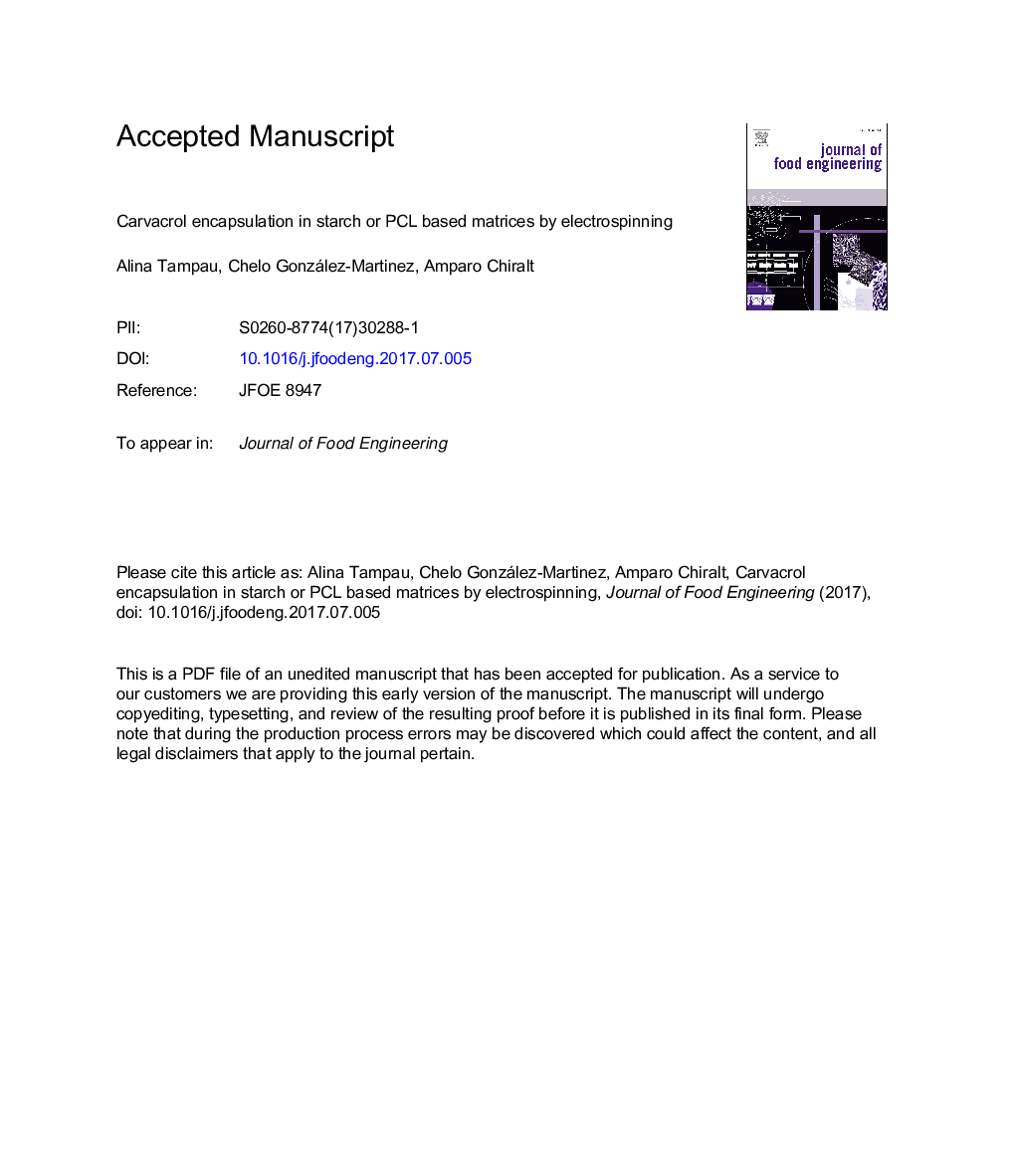| Article ID | Journal | Published Year | Pages | File Type |
|---|---|---|---|---|
| 4908853 | Journal of Food Engineering | 2017 | 26 Pages |
Abstract
Carvacrol (CA) was encapsulated in polar (corn starch-Sodium caseinate, CS:NaCas) or non-polar (poly-ε-caprolactone, PCL) matrices by electrospinning (ES). Electrospunable formulations were prepared with CS:NaCas (9:1 w/w ratio), at 2, 4 and 6 wt % in water, or PCL at 5, 10 and 15 wt% in glacial acetic acid using different CA ratios (0, 5, 10 and 15 wt% with respect to the polymer). The liquid formulations were characterized for electrical conductivity, rheological behaviour and surface tension, and ES process conditions were established. The electrospun structures were analysed as to their nanostructure and CA retention. Geometry of the nanostructures obtained from the PCL systems was nanofibrillar with some beads, whereas it is particles that are mainly deposited for starch systems. PCL systems yielded better CA encapsulation efficiency (EE) than the polar ones, where greater variability was observed. The best EE (around 80%) was obtained for 15% PCL regardless of the CA ratio.
Keywords
Related Topics
Physical Sciences and Engineering
Chemical Engineering
Chemical Engineering (General)
Authors
Alina Tampau, Chelo González-Martinez, Amparo Chiralt,
